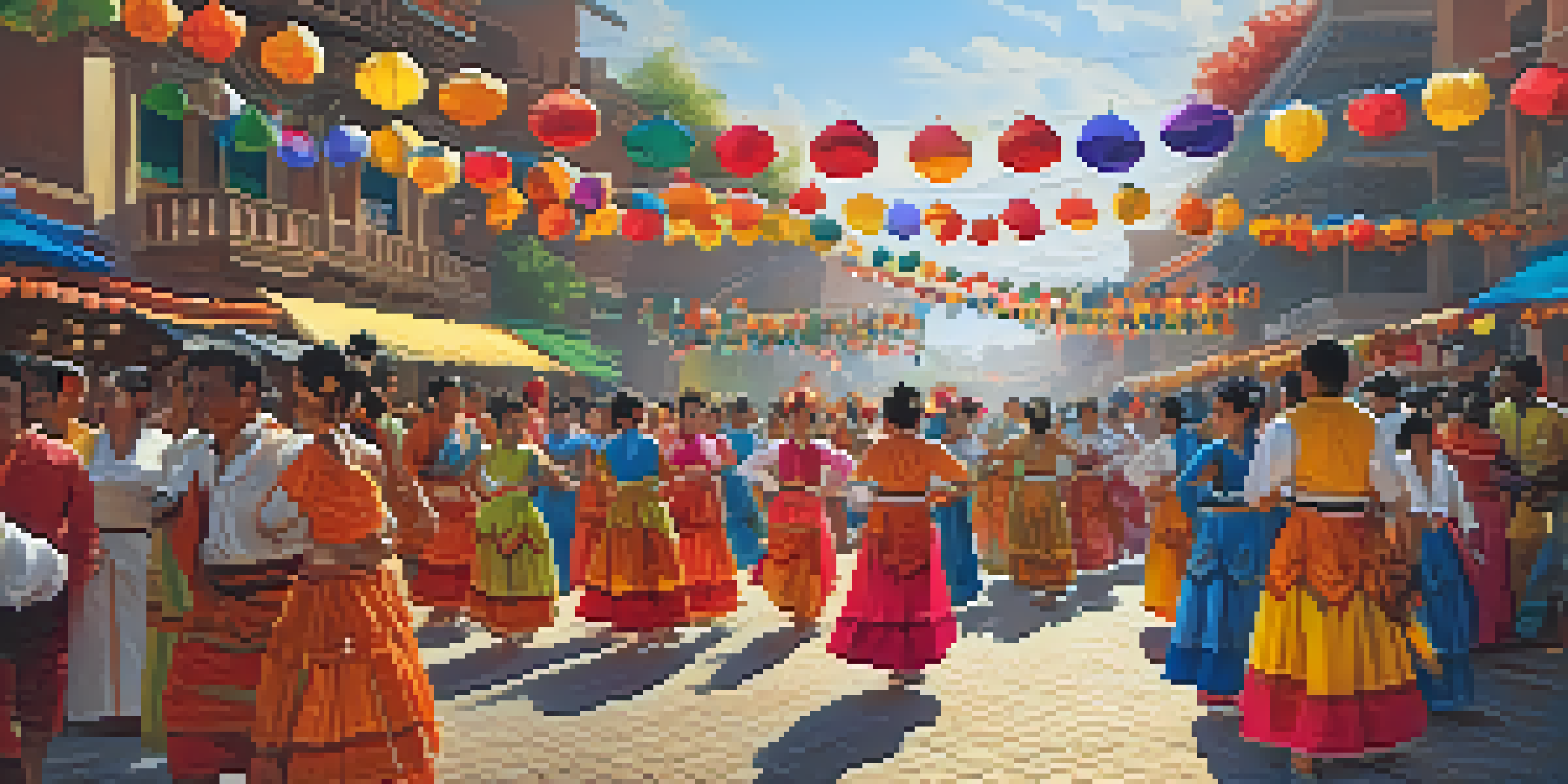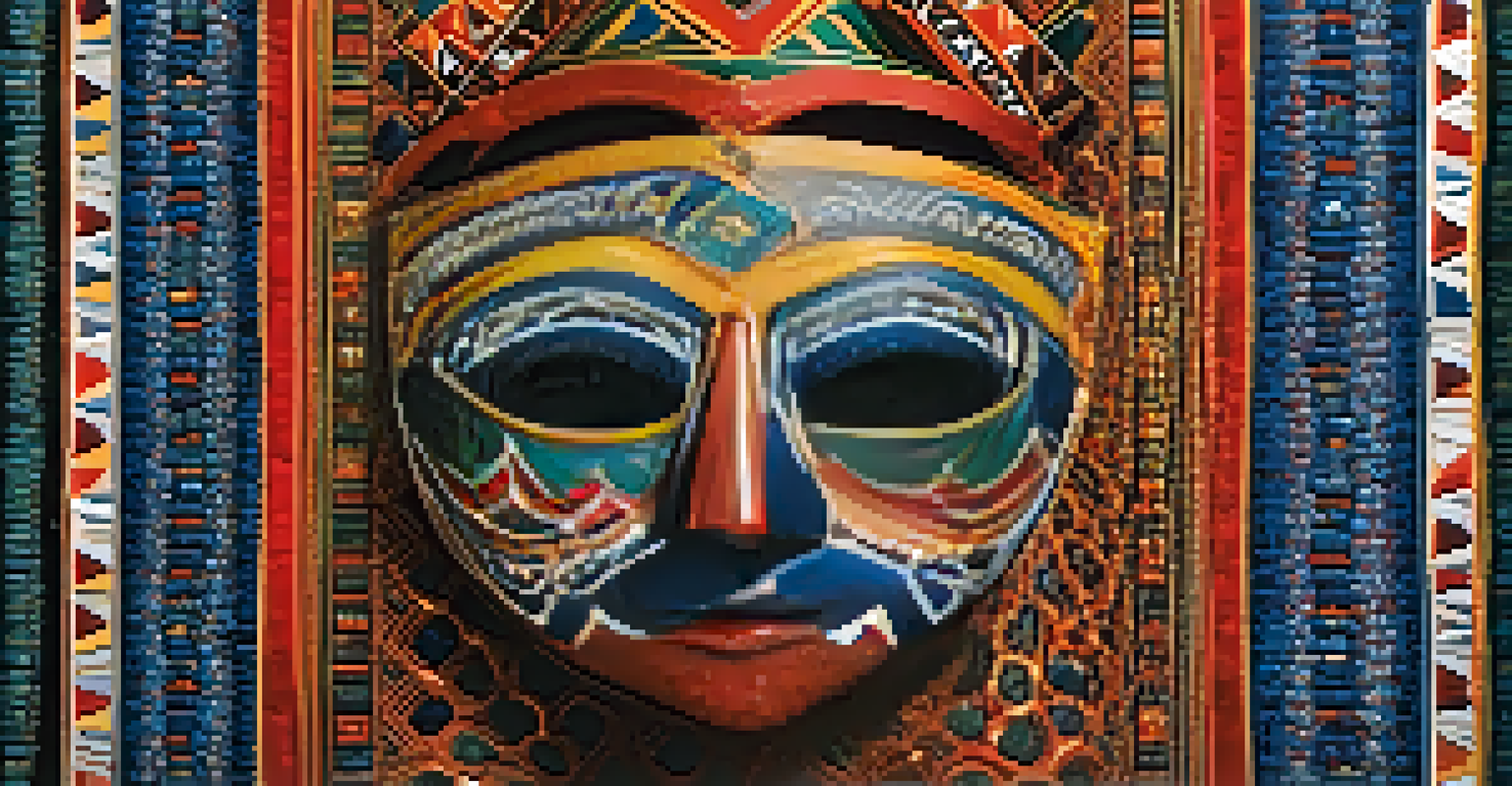Cultural Appropriation vs. Appreciation in Film Production

Understanding Cultural Appropriation in Film
Cultural appropriation occurs when elements of one culture are taken by another, often without permission or understanding. In film production, this can manifest through the portrayal of characters, stories, or aesthetics that do not belong to the filmmakers' own culture. This can lead to negative stereotypes and the erasure of the original culture’s significance.
Cultural appropriation is often seen as a form of theft, where one culture takes from another without permission, understanding, or respect.
For example, think of a film that features traditional clothing from a culture, but is produced by someone who has no connection to that culture. This not only oversimplifies the cultural significance but can also commodify something sacred for that community. It's crucial to recognize that appropriating culture can perpetuate harmful narratives.
Ultimately, understanding cultural appropriation is the first step for filmmakers to treat cultures with the respect they deserve. By being aware of this concept, creators can begin to navigate their stories more thoughtfully and sensitively.
Defining Cultural Appreciation in Film
Cultural appreciation, unlike appropriation, involves a respectful acknowledgment of another culture, often highlighting its significance and value. In film, this can be seen when filmmakers actively engage with the culture they are portraying, collaborating with cultural experts to ensure accuracy and sensitivity. This approach can lead to more authentic storytelling that resonates with audiences.

A great example is the animated film 'Coco,' which celebrates Mexican culture and traditions related to Día de los Muertos. The filmmakers worked closely with cultural consultants to depict the vibrant customs in a respectful and meaningful way. This type of engagement not only enriches the film but also honors the culture it represents.
Cultural Appropriation vs. Appreciation
Understanding the distinction between cultural appropriation and cultural appreciation is essential for filmmakers to create respectful and authentic narratives.
By fostering genuine appreciation, filmmakers can create narratives that celebrate diversity while also contributing to a broader understanding of different cultures. This leads to positive representation and helps combat stereotypes often seen in the industry.
The Fine Line Between Appropriation and Appreciation
Drawing the line between cultural appropriation and appreciation can be challenging, especially in creative industries like film. It often boils down to intent, context, and the relationship between the creators and the culture being represented. Film creators must be mindful of how they approach their subjects to avoid crossing into appropriation.
The power of representation is that it allows people to see themselves in the stories that are being told.
Consider a film that features a cultural festival; if the filmmakers are genuinely invested in understanding the festival's meaning and significance, they are more likely to appreciate it. However, if they treat it merely as a backdrop for entertainment without deeper engagement, it risks appropriation. This distinction is vital for fostering respect and understanding.
Ultimately, filmmakers should ask themselves critical questions about their motivations and methods. This self-reflection can guide them toward creating work that uplifts and respects cultural narratives rather than exploiting them.
Real-World Examples of Cultural Missteps
Several films have faced backlash for cultural appropriation, serving as cautionary tales for filmmakers. One notorious example is 'Avatar,' which received criticism for its portrayal of indigenous cultures while being created by a predominantly Western team. Critics argued that it echoed colonial narratives, raising questions about who gets to tell these stories.
Another example is 'Aloha,' which sparked outrage for casting a white actress as a character who was supposed to be of Hawaiian descent. This misstep highlighted not just appropriation but also the lack of representation for marginalized communities in Hollywood. Such incidents remind us of the importance of authenticity in storytelling.
Collaboration Ensures Authenticity
Collaborating with individuals from the culture being represented fosters accurate and respectful portrayals in film.
These examples underscore the need for filmmakers to approach cultural themes with care and responsibility, ensuring that they are not perpetuating harmful stereotypes or narratives. Learning from these missteps can help guide future projects toward more respectful representations.
The Role of Collaboration in Cultural Representation
Collaboration is key in achieving cultural appreciation in film. By partnering with individuals from the culture being represented, filmmakers can ensure that their portrayal is accurate and respectful. This collaboration can take many forms, from hiring cultural consultants to involving community members in the storytelling process.
For instance, the production of 'Black Panther' involved collaborating with African scholars and artists to create an authentic representation of Wakanda. This effort not only enriched the film but also empowered voices from the African community, showcasing the importance of inclusivity in the creative process. Such partnerships can lead to more nuanced narratives.
Ultimately, collaboration fosters a sense of community and respect, reminding filmmakers that storytelling is not just about them but also about the cultures they aim to represent. Embracing this collaborative spirit can lead to a more diverse and authentic film industry.
The Impact of Social Media on Cultural Conversations
In today’s digital age, social media plays a crucial role in shaping conversations around cultural appropriation and appreciation. Platforms like Twitter and Instagram allow audiences to voice their opinions and hold filmmakers accountable for their portrayals. This increased visibility can lead to swift reactions and discussions about cultural representation in film.
For example, when a film is perceived as appropriating a culture, social media users often mobilize, sharing their perspectives and rallying for change. This has led many filmmakers to reconsider their approaches and engage with communities before releasing their work, resulting in a more thoughtful production process. Social media acts as a catalyst for cultural dialogue.
Social Media Shapes Cultural Dialogue
Social media plays a vital role in holding filmmakers accountable and promoting discussions around cultural representation in film.
As filmmakers navigate these conversations, understanding the impact of social media can help them remain accountable and responsive to audience feedback. This awareness can ultimately lead to films that not only entertain but also educate and promote cultural understanding.
Moving Towards a More Inclusive Film Industry
The film industry is gradually recognizing the importance of inclusivity and cultural sensitivity in storytelling. Initiatives aimed at increasing representation behind the camera are gaining traction, with more filmmakers from diverse backgrounds taking the lead. This shift is essential for creating a more balanced perspective in the narratives being told.
Moreover, studios are beginning to prioritize stories that highlight underrepresented cultures, showcasing their richness and diversity. Films like 'Minari' and 'The Farewell' exemplify this movement, as they offer authentic portrayals of Asian-American experiences. By amplifying these voices, the industry can move towards greater appreciation rather than appropriation.

As audiences demand more authentic representation, filmmakers have a unique opportunity to reshape the landscape of cinema. By committing to inclusivity and cultural respect, the film industry can pave the way for a future where every story is told with authenticity and care.